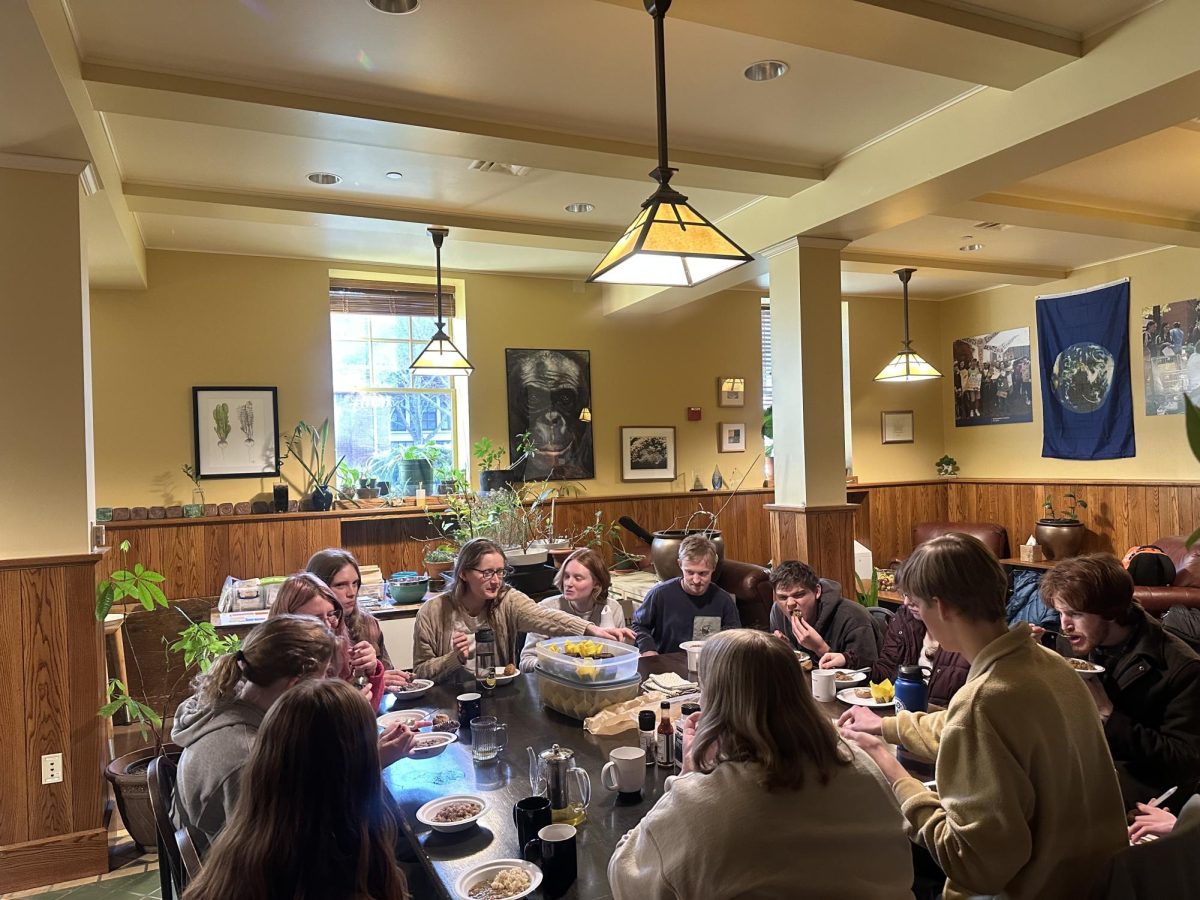By REEM ABOU ELANAIN
Copy Editor
abouelenainr@allegheny.edu
In Doane Hall of Art there is a room that was turned to an art studio. This room is overflowing with drawings, even the floor is covered in them. The creator of these drawings is Steve Prince, the artist-in-residence at Allegheny College.
Prince has recently signed a tenure contract with the college. He is from New Orleans, La. He studied fine arts at Xavier University in New Orleans. His concentration is in printmaking and sculpture. Prince has wanted to be an artist ever since he could remember. He recalls his first memory when he found his passion for art. He was four or five years old then.
“We had a set of encyclopedias,” Prince said. “And I was looking at them, and I pulled the letter ‘M’ off the shelf. And I just started to flip through it. This is before I could read. I stumbled across the artwork of Michelangelo. I became enamored with his work.”
With the spontaneity of a child he tore a page with a painting he liked so much. He got a piece of paper and a pencil and started copying it. When his older sister came into the room and saw what he was doing, she did what any other older sibling would do. She told her mother.
“I got spanked,” Prince said. “It’s one of the things I can’t forget because after that my mom told me to put that page back in that book. I taped this thing back in the book.”
He never managed to put the page back properly in the book. It kept on sticking out over the other pages of the encyclopedia. For many years that was a constant reminder of his love of drawing, art and Michelangelo.
“It’s like creating dance on paper,” Prince said describing the process of drawing.
This appears in many of his drawings that can be seen not only in his studios but also in designs that he makes to promote some events on campus. The most recent one is the t-shirt design he has made for an upcoming journalism conference called The Story Next Door.
Cheryl Hatch, journalism professor, has put this conference together. Prince suggested the idea of creating t-shirts for the conference.
“We sat down in a meeting and Steve had his sketchbook,” Hatch said. “Richard Sayer, who’s been in Meadville quite a while and knows Meadville very well, was there too. He [Prince] said ‘just talk to me about the project, what you’re thinking and I’m going to sketch.’”
The design was born from that conversation. On the bottom left side there is a zipper, which was invented in Meadville. It is unzipping as if it unlocks the other stories in the drawing. The channel lock, which is one of the main tool companies that still exists in Meadville becomes the roof of the house in the drawing. The door of the house echoes the name of the conference: The Story Next Door. The people appearing there represent the Meadville community and all the stories that are bottled in them. The photographer stands for the students who are getting out and getting stories of the community.
Prince wants students from the journalism class to engage in the process of creating the t-shirts. It is an opportunity to work with an actual artist and it would also help students learn an important concept.
“I think that what it does is that it goes against this whole idea that you always have to go outside of yourself to get something done,” said Prince. “What I really hope to show with this project with the students is to show the self sufficiency that many times we have the things and the ability to do stuff because it is already in the store house, it’s already conceptually here.”
This is not the first project Prince has done that integrates different departments of the college with art. He is planning a conference called Combat Paper for the next fall semester with Alexis Hart, an associate professor at the English department and the director of writing.
The idea of the Combat Paper project is to pulp military uniforms and turn them into paper that would be used to create artwork or literature about war and its effects. People creating the paper, artwork and literature are either veterans or people close to them. Prince and Hart are working with Allegheny College to bring a group of these people here.
“[The aim of this is to] look at this idea of war and what does war mean to our society and look at war and its effects upon the community,” Prince said.
It was Hart who came up with the idea.
“I had known about the Combat Paper project,” Hart said, “and when I came to Allegheny, I started talking to Steve Prince. He told me about a project he had done. He had done a bust that was of a veteran for a building in Richmond. He had been telling me about how wonderful it was to work with the military community and for the military community and how appreciative they are.”
Seeing his enthusiasm, Hart suggested the idea of the conference to Prince, and the more they discussed it the more it grew. About thirty artists and guest speakers will come next fall semester to Allegheny College as part of that conference.
Prince does all of these activities besides his teaching duties. He teaches an intro drawing class and he has also created a free class that is open to the community.
John Christie-Searles, professor of political science, black studies and global health studies, attends the Saturday class regularly. He’s always been interested in arts and taking this class is a continuation about an interest he has.
“I am very happy that this has been offered and that there is a welcoming aspect to joining in a community throughout,” Christie-Searles said. “Professor Prince has allowed me to view art in yet another way schematically, mechanically as far as how my body works when I draw. He has enforced the intellectual aspect of what art is about.”
This free class takes place every Saturday from 10 a.m. to 1 p.m. People attending this class do not have to have any previous experience in drawing. All they need is 18 inches by 24 inches newsprint pads, pencils or charcoals and erasers. If people just want to come to give it a try or don’t have the materials, there are supplies available on the site that are given to participants. Prince’s aim is to offer people from the community and on campus an opportunity to enjoy the process of drawing.









